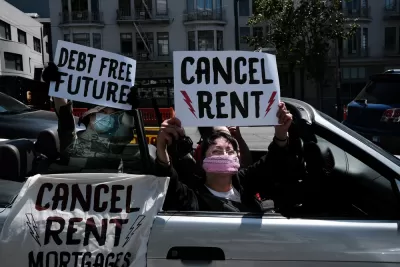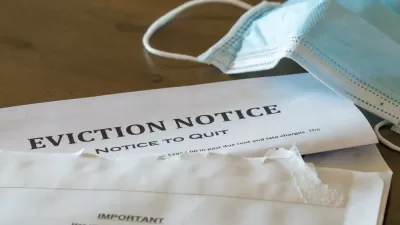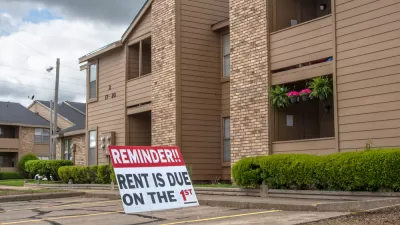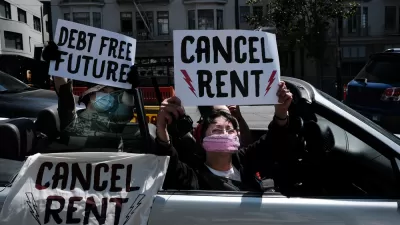The effects of the pandemic economic shutdown on the rental market have been far lower than feared—at least at aggregate, not individual, levels. Is an eviction moratorium the most helpful tool at this point in the pandemic?

An article by Michael Hendrix suggests that the likelihood of an "eviction tsunami" is low, and that the federal government's eviction moratorium, ordered by the Centers for Disease Control and Prevention (CDC) and extended by the Biden administration until the end of July, actually did very little to stem evictions during the past year and a half.
The ineffectiveness of the CDC's eviction moratorium, however, might suggest that the rental market is not on the verge of a complete meltdown, as many advocates (and this author) have worried since the outset of the pandemic.
"The market and generous government aid seem to have done far more to avert an eviction crisis than the various moratoria on the books," writes Hendrix. Meanwhile the economic ice of the pandemic is thawing. "Renters are more confident in their housing security than even a few months ago, according to a new analysis by Zillow, and in contrast to the unmet fear of 30 to 40 million evictions last year, the number at risk of eviction today is closer to 2.7 million."
Though renters of color suffered disproportionate impacts in the pandemic rental market, "this is a case for financial aid more than for a blunt, crisis-induced eviction moratorium," writes Hendrix. "Helping renters receive financial aid and get better terms from property owners would do far more to avert painful evictions."
FULL STORY: Do We Really Need a Moratorium on Evictions?

Alabama: Trump Terminates Settlements for Black Communities Harmed By Raw Sewage
Trump deemed the landmark civil rights agreement “illegal DEI and environmental justice policy.”

Planetizen Federal Action Tracker
A weekly monitor of how Trump’s orders and actions are impacting planners and planning in America.

Why Should We Subsidize Public Transportation?
Many public transit agencies face financial stress due to rising costs, declining fare revenue, and declining subsidies. Transit advocates must provide a strong business case for increasing public transit funding.

Understanding Road Diets
An explainer from Momentum highlights the advantages of reducing vehicle lanes in favor of more bike, transit, and pedestrian infrastructure.

New California Law Regulates Warehouse Pollution
A new law tightens building and emissions regulations for large distribution warehouses to mitigate air pollution and traffic in surrounding communities.

Phoenix Announces Opening Date for Light Rail Extension
The South Central extension will connect South Phoenix to downtown and other major hubs starting on June 7.
Urban Design for Planners 1: Software Tools
This six-course series explores essential urban design concepts using open source software and equips planners with the tools they need to participate fully in the urban design process.
Planning for Universal Design
Learn the tools for implementing Universal Design in planning regulations.
Caltrans
Smith Gee Studio
Institute for Housing and Urban Development Studies (IHS)
City of Grandview
Harvard GSD Executive Education
Toledo-Lucas County Plan Commissions
Salt Lake City
NYU Wagner Graduate School of Public Service





























